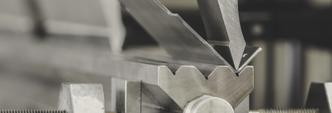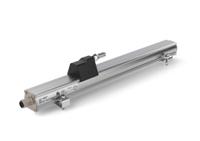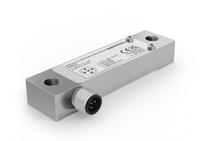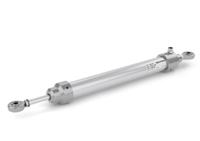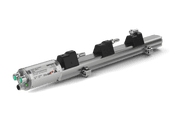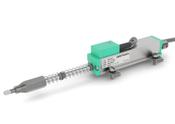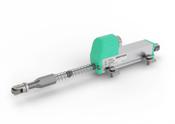Press brakes are essential machines for the controlled deformation of metal, and ideal for carrying out complex and high-precision bending on sheets of all shapes, sizes and thicknesses.
With its versatility and integration with state-of-the-art control technologies, a press brake enables fast, accurate and repeatable production, reducing time, costs and error margins. It is the perfect solution for production-intensive sectors such as the automotive, construction, furniture and industrial metalworking sectors.
Modern press brakes offer an ideal balance of power, precision and automation, ensuring maximum operational efficiency and superior manufacturing quality.
Necesidades:

Measurement of pressure in the hydraulic circuit
Para saber más
Monitoring the flatness of the bending blade
Para saber más
Compensation for vertical bending force
Para saber más
Compensating for horizontal bending force
Para saber más
Operating principle
A press brake is a machine tool designed to bend sheet metal by applying controlled force with maximum precision. The process begins when the movable punch descends on a die positioned on the bench, deforming the sheet metal according to the desired angle. By using interchangeable moulds, it is possible to create complex and customised folds. The most modern versions, equipped with digital controllers, allow the automated management of the work cycle, guaranteeing repeatability, speed and manufacturing quality. Brake presses belong to three distinct groups depending on their type of drive: hydraulic, electric or manual. Hydraulic presses are the most popular because of their ability to apply high forces in a precise and controlled way, ideal for demanding machining. Electric presses, on the other hand, stand out for their execution speed, energy efficiency and lower maintenance requirements compared to traditional models.
Requirements and Technology:
The integration of advanced sensors has transformed press brakes into smart systems that can guarantee superior performance and total control. These sensors monitor key parameters, such as blade position, applied force, bench flexure and effective bend angle, in real time, allowing the control system to automatically adapt movements and pressure to compensate for any variation.
This integration guarantees a precise and uniform fold, regardless of the thickness, material or length of the piece. With this approach it is possible to reduce waste, improve the quality of the finished product and optimise processing times.
Modern press brakes, equipped with sensors, represent a high-performance and reliable solution, in which versatility, precision and safety are combined.
